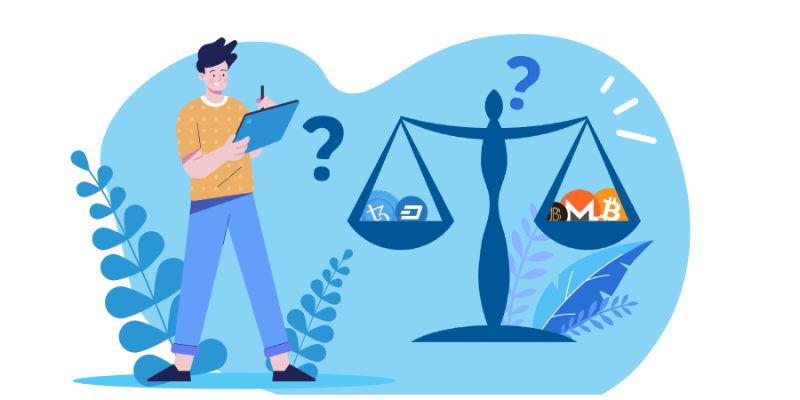Navigating the uncertain waters of regulations surrounding crypto margin trading can feel like setting sail in a storm for many investors. You’ve heard the buzz, seen the potential high returns, and perhaps you’re tempted to dive in. But, just like the sea, the world of crypto margin trading is vast and can be perilous without a map. As an expert, let me guide you through this choppy sea. We’ll start by getting our bearings with the basics of margin trading and how leverage can both propel and rock your investment boat. Then we’ll chart the global regulatory landscape that shapes how and where you can trade. It’s not just about following the compass; it’s about understanding the winds – the compliance and risk management practices that keep your trading ship afloat. And since smooth seas don’t make skilled sailors, let’s prepare to tackle the complexities of international regulations together, ensuring your crypto voyage doesn’t end in a shipwreck.
Understanding the Basics of Crypto Margin Trading
Defining Margin Trading and Its Mechanisms
Margin trading lets traders borrow money to invest in crypto. They can buy more than they otherwise could. It’s like putting down a part of the cost and borrowing the rest. You must pay this money back, often with interest. It’s pretty risky. If prices drop, losses can exceed your money. Brokers might ask you to put in more money, a ‘margin call’. If you can’t, they may sell your crypto to cover the debt.
The Role of Leverage in Cryptocurrency Transactions
Leverage in crypto means using borrowed funds to trade. People do this to ramp up their buying power. It multiplies profits but also magnifies losses. Different platforms offer different leverage limits. These can range from 3x to 10x, or even more. But remember, high leverage can lead to quick losses. Traders must understand the rules and risks before diving in.
Regulators set limits to protect traders from huge losses. The SEC, CFTC, and other agencies keep an eye on this. They make sure trading stays fair and safe. Brokerages and exchanges must follow strict rules. This includes KYC and AML laws to stop bad actors from abusing the system. These rules also help manage risks. They ensure there’s enough cash (liquidity) in case things go wrong.
Leverage can be a useful tool. But it must be handled carefully. It’s not for everyone. Before you start, make sure to learn the ropes and trade wisely.
Global Regulatory Landscape for Crypto Margin Trading
Examining SEC and CFTC Guidelines on Crypto Leverage
When we talk about crypto trading, SEC and CFTC are big names. These U.S. agencies set rules for how you can use leverage in crypto trades. Leverage is using borrowed money to trade more than what you have. The SEC looks at crypto just like other securities, while the CFTC sees it as a commodity. Both want to make sure trading is fair and less risky.
Rules say you can’t go wild with borrowing. There are limits, usually between three to ten times your own money. This is to keep risks low. If prices swing hard, as they often do with crypto, things can get really bad, really fast. Traders might face margin calls, when exchanges ask for more money to cover losses. If you can’t pay up, they can close your positions to stop more loss.
ESMA’s Stance and Regulatory Approach in the EU
Now let’s swim across the pond to Europe. ESMA is sort of like the EU’s SEC and CFTC rolled into one. They watch over digital currency trading and put a keen eye on margin trading. ESMA has a strict view on using leverage with digital assets. They set up rules to protect both traders and the market.
Limits on leverage are similar to the U.S., set to keep the playing field even. Their goal is to prevent huge losses that could hurt everyone involved. They also check if brokers and exchange platforms do what they should under these rules. This means doing KYC, which is knowing who your customer is, and keeping up with AML standards. This helps stop money from shady deals getting into the market.
Exchanges in the EU must be tight on who they allow to trade on margin. They also need good risk management to deal with money borrowed for trading. ESMA works hard to make sure these rules are everywhere in the EU. This helps traders know what’s going on, no matter where they are. It also makes things safer for them while they trade.
So, no matter if you’re in New York or Nice, there are some big rules to follow for using leverage in crypto margin trading. This keeps traders, exchanges, and everyone’s cash safer from the wild waves of the crypto ocean. It’s tricky, but it’s all about making sure nobody dives too deep without a safety net.
Compliance and Risk Management in Margin Trading
Implementation of KYC and AML Standards by Exchanges
We must check who we deal with in crypto. It’s law for safety. This is where KYC and AML come in. These rules stop bad acts like money theft and funding harm. Like a fence keeps a yard safe, KYC and AML guard our money in crypto.
All crypto exchanges must know their users. This means they collect data. Name, photo ID, and more. It’s like how schools ask for records before you join. AML rules make sure money is clean. No dirty money in, no dirty money out.
When you sign up for trading, exchanges will ask for your info. This step is key. It keeps everyone fair and square. It’s like being picked for a team. They must know you play by the rules. Only then can they let you in the game.
KYC and AML are big deals. They make sure we play fair in crypto. Without them, the whole system could fall apart. It’s like a game with no rules. Soon, it’s not fun for anyone.
Strategies for Managing Liquidity and Default Risks
Money must flow in trading, like water in pipes. If it stops, trouble starts. This is about liquidity in crypto. Exchanges must have enough to cover trades. A shop can’t sell what it doesn’t have. Slim chances of running dry keeps trades smooth.
Next are default risks. These are like promises on a handshake. If one trader can’t pay up, we all feel the sting. This is bad for business. Exchanges have rules to stop this mess. They set limits on trading. Like a parent limits candy, it’s for your own good. It stops you from biting off more than you can chew.
Those limits are like fences. They keep risks low. Traders must put cash up front. This is called an initial margin. Think of it as entry to a club. It makes sure you’re serious. Then, they keep an eye out. If values drop, they call for more cash. That’s a margin call. It’s like a game where you add coins to keep playing.
To sum it up, managing risks is a big job. But with the right rules and checks, it works out. KYC and AML keep our ID in check. Limits and margins keep our money safe. Together, they make crypto trading safer for all. It’s like a game with clear rules, a watchful ref, and players who know the score. Everyone knows where they stand, and the game goes on without a hitch.
Protecting Investors and Navigating International Regulations
Cryptocurrency Licensing and Investor Protection Measures
When we trade crypto on margin, we borrow money. This amps up our trading power. We must get one thing straight: high rewards here mean high risks too. Crypto exchanges want to manage this. They do this with rules that protect us, the traders.
These rules are about how much we can borrow. It’s our crypto trading leverage limits. Think of it like this: if you have $10, they might let you trade as if you had $30 or even $100. But there’s more. To trade, you need a license. It’s not just any license. It’s a special one for cryptocurrency. Each country has its own set of rules, or what we call cryptocurrency licensing requirements.
You may wonder, what happens if things go south? Well, there’s a thing called “crypto margin calls.” This is like a wake-up call. It means you need to put more money in, or your trade gets closed. It’s not fun. The goal is to stop losses before they get too big.
Let’s not forget, bad actors are everywhere. This is where “Know Your Customer” (KYC) and “Anti-Money Laundering” (AML) standards come in. Crypto exchanges use these to keep things clean. They make sure money on their platform isn’t dirty. They check who you are and where your money comes from.
The Complexity of Cross-Border Crypto Regulation and Enforcement
Now, this gets trickier when we talk about the whole world. Cross-border crypto regulation is a complex beast. It’s when different countries try to play nice with each other regarding rules. Not an easy task, believe me.
Imagine this: you’re in the US trading on an exchange in Japan. Which rules apply? Both countries might have a say. The US through the SEC (Securities and Exchange Commission) and Japan with its own financial authority. Both might look at what you’re doing. This is where things like the CFTC (Commodity Futures Trading Commission) cryptocurrency guidance come into play. They help smooth things out between countries.
To add to this, we have groups like FINRA (Financial Industry Regulatory Authority) in the US. They make rules for brokers offering cryptocurrency products. They want to make sure brokers play by the rules. This helps keep our money safe when we trade.
But it’s more than just following rules. It’s about knowing the risks of crypto leverage. Like, what happens if the person on the other end can’t pay? That’s counterparty risk. Or, what if the whole market drops? That’s default risk. Things can go wrong fast.
In short, it’s a dance. Exchanges, regulators, and traders; we all have to move together. It’s not just about making money. It’s about staying safe while trying to make that money. So when you’re ready to jump into the world of crypto margin trading, keep these things in mind. Play it smart. Stay informed. And always, always know the rules of the game you’re playing in.
In this post, we dove into the world of crypto margin trading. We looked at how margin trading works and the impact leverage has on trades. We also explored the regulatory side, noting the SEC and CFTC’s input alongside the ESMA’s rules in the EU. Further, we discussed the importance of KYC and AML in exchanges and how to handle liquidity and default risks. Lastly, we touched on investor protection and the tricky business of international crypto regulation.
I believe smart trading means knowing the rules and risks. As an expert, my final thought is simple: educate yourself, trade wisely, and always stay informed of legal changes. Safe and smart trading can lead to big wins, but the key is understanding the game you’re playing. Keep learning, stay alert, and trade responsibly!
Q&A :
What are the legal requirements for engaging in crypto margin trading?
Crypto margin trading involves borrowing funds to trade cryptocurrencies, which carries a higher risk than regular trading. Legal requirements vary by jurisdiction but generally include age restrictions, adherence to anti-money laundering (AML) and know your customer (KYC) regulations, and various financial compliance standards. Traders must also be aware of the tax implications of margin trading within their country.
How do regulations differ for crypto margin trading compared to traditional margin trading?
Regulations for crypto margin trading are evolving and can be less stringent or more complex than traditional systems. One key difference is the oversight; while traditional margin trading is regulated by organizations like the SEC in the US or the FCA in the UK, crypto trading may not fall under the same direct regulations. However, platforms offering crypto margin trading may still have to comply with broader financial laws and may be subject to securities regulations depending on the jurisdiction.
What measures have been taken by regulatory bodies to control crypto margin trading?
Regulatory bodies across the globe are implementing various measures to control crypto margin trading to protect investors from high risks associated with leverage. These measures can include setting limits on the available leverage, requiring clear disclosures of the risks involved, enforcing AML and KYC processes, and in some cases, outright bans on such activities for retail investors.
How do international regulations impact crypto margin trading across different countries?
International regulations can impact crypto margin trading by creating a fragmented regulatory environment. Some countries may have strict rules and oversight, while others offer a more relaxed approach. This disparity can lead to issues such as regulatory arbitrage, where traders and exchanges choose to operate in jurisdictions with more favorable regulations. The evolving nature of international cooperation on regulation also plays a role in shaping the landscape for global crypto margin trading.
Can traders from any country participate in crypto margin trading, or are there restrictions?
Traders from certain countries may face restrictions on participating in crypto margin trading due to their local laws prohibiting or limiting this type of high-risk trading. It’s important for traders to be aware of their own country’s regulations regarding cryptocurrency trading as well as the rules of the platforms they use, which may not accept users from specific regions due to legal constraints.



